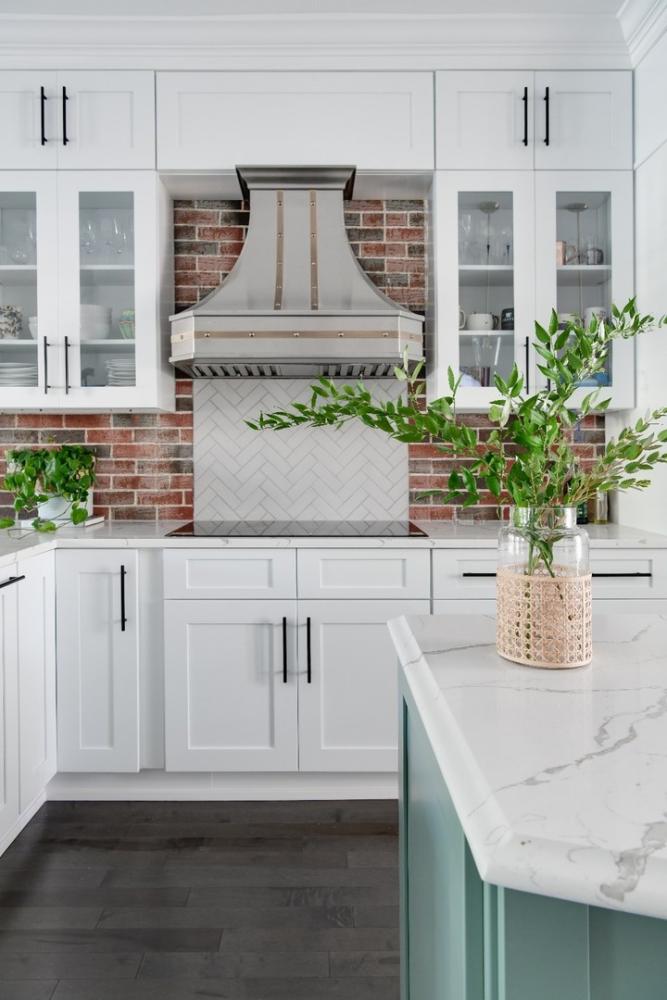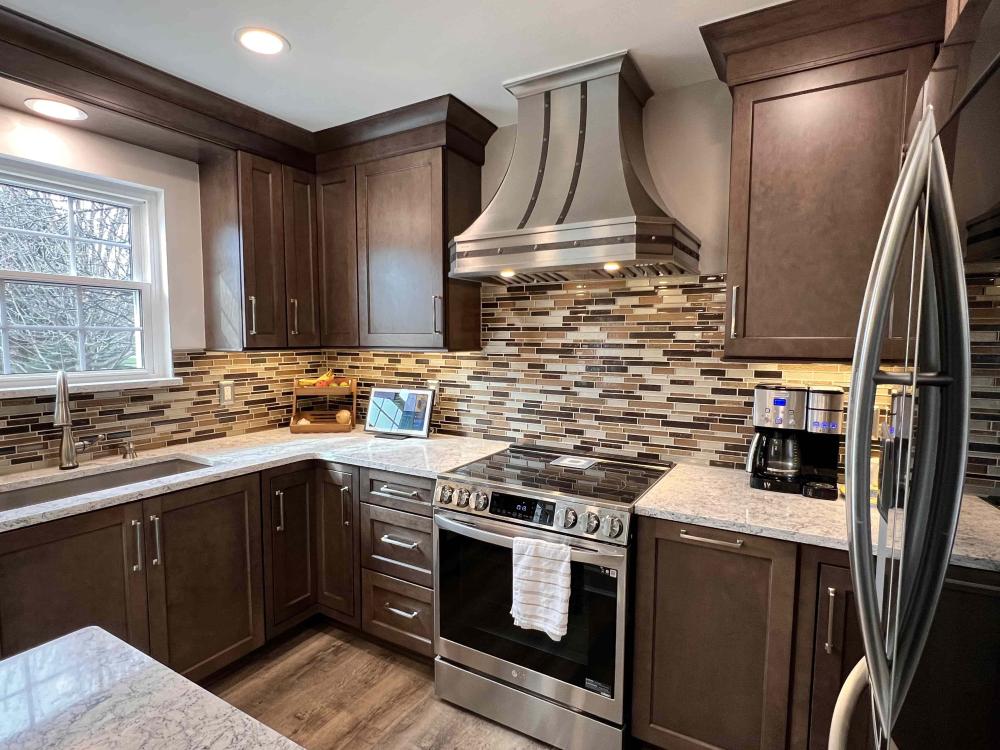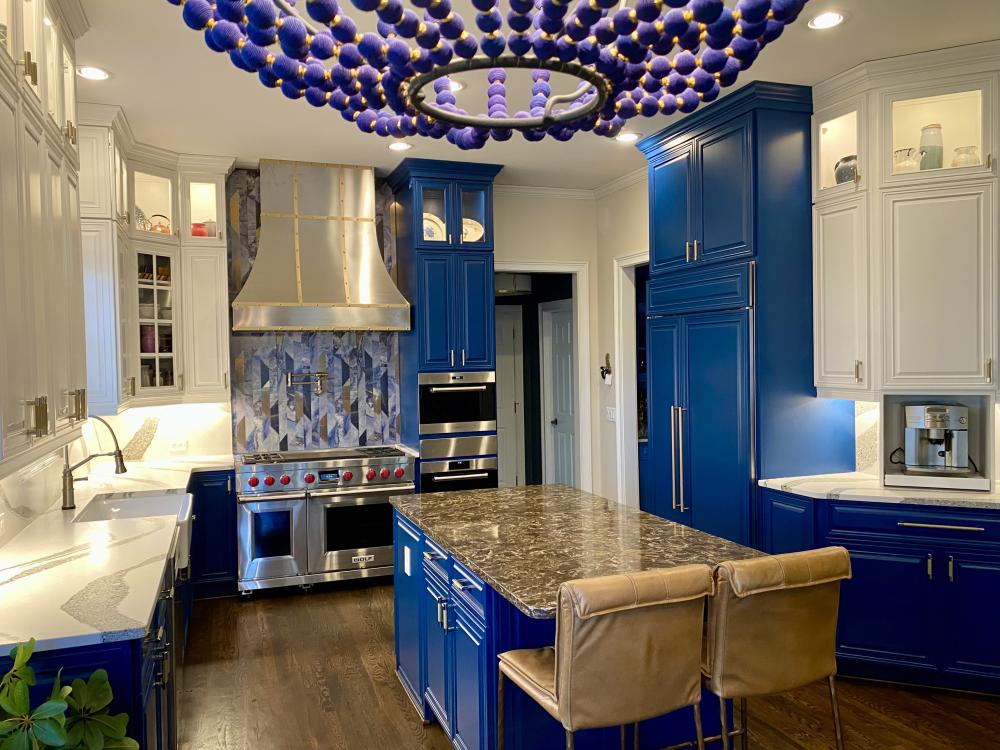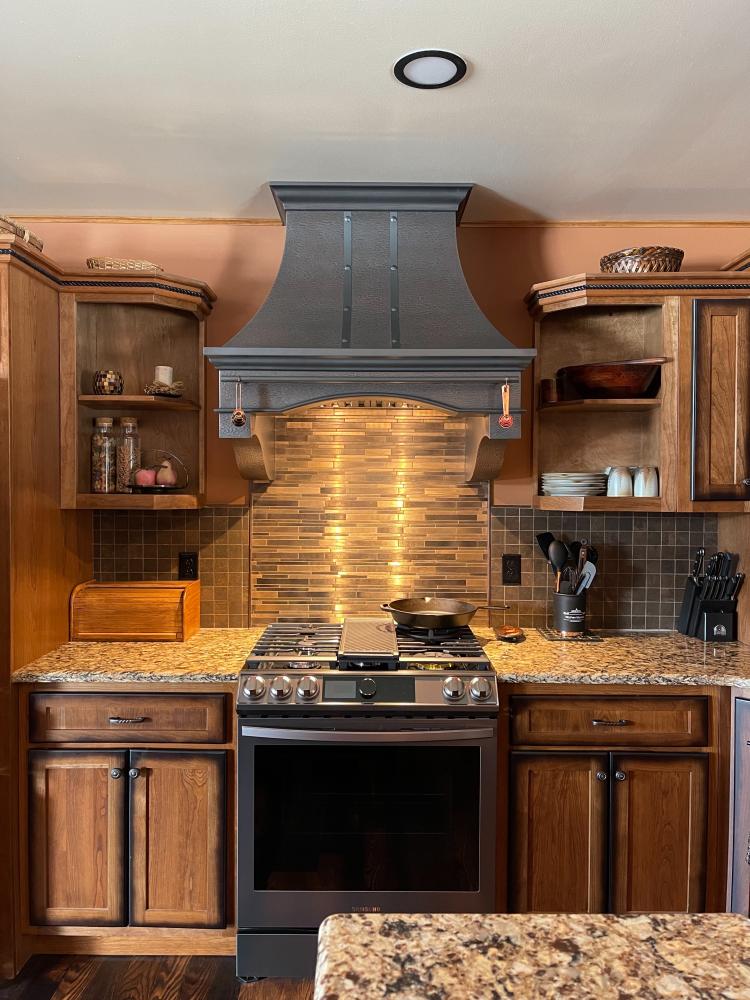Have you ever wondered why your kitchen gets smoky and stuffy while cooking? Or why your smoke detector goes off every time you fry something? Enter the unsung hero of every kitchen: the kitchen exhaust fan.
While often overlooked, this simple appliance can work wonders to keep your kitchen clean, fresh, and safe. This article will share some fascinating kitchen exhaust fan facts that will make you appreciate this often-underestimated tool.
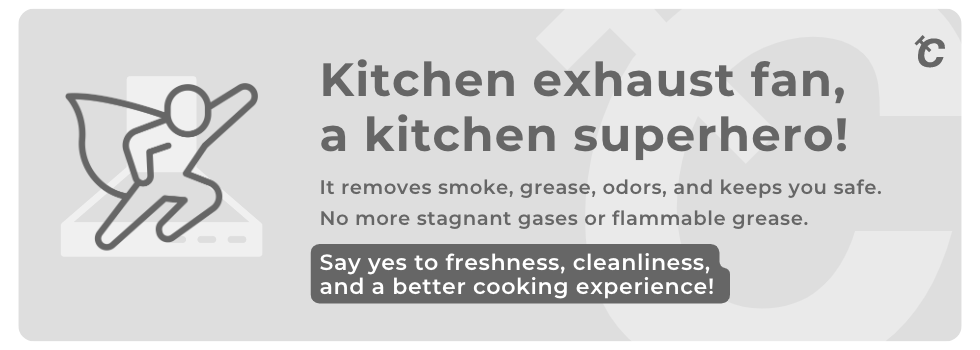
What Is a Kitchen Exhaust Fan, and Do I Need One?
Do you know what's cooler than having a fancy stove in your kitchen? It's having a kitchen exhaust fan, of course!
A kitchen exhaust fan, also known as a range hood, is like a superhero that saves the day by removing smoke, airborne grease, steam, and cooking odors from your kitchen. It works by absorbing the air in your kitchen and filtering it through a set of grease-trapping filters before expelling it outside through a duct.
But why should you even care about having a kitchen exhaust fan? Well, for starters, it's a matter of safety. Cooking releases many volatile gases, such as carbon monoxide, nitrogen dioxide, and sulfur dioxide, which can harm your health if left stagnant. And remember the highly flammable grease buildup that can cause fires, especially if you have a gas stove. Yikes!
But fear not! A kitchen exhaust fan can also help you keep your kitchen and home smelling fresh and clean by eliminating unwanted odors and moisture. And it doesn't stop there! It can also prevent your walls, cabinetry, and other surfaces from becoming stained and damaged.
If you're wondering whether you need a kitchen exhaust fan, the answer is likely a resounding "YES!" Especially if you love cooking up a storm in the kitchen. So, invest wisely in a kitchen exhaust fan, and enjoy a safer, cleaner, and more pleasant cooking experience!
How Do You Vent a Kitchen Without a Hood?
Who needs a range hood in their kitchen when there are many other fun and creative ways to keep indoor air clean and healthy? If you don't have a hood in your kitchen, don't worry! There are plenty of options to choose from.
One option is to install an under-cabinet range hood. This superhero attaches to the bottom of your cabinets and can be ducted outside through the wall or ceiling. Under-cabinet range hoods come in various sizes and styles, so you can find one that fits your kitchen design and cooking needs.
If that's not your style, another option is to use a downdraft venting system, which pulls smoke and steam down and away from the cooking surface. These cool vents can be installed on the countertop behind your cooktop or stove and vented outside through the floor or wall.
And if neither of those options is feasible for your kitchen, don't worry! You can still have a clean and healthy kitchen by using a portable air purifier. These nifty gadgets draw air through a filter that captures and traps airborne particles like smoke, dust, and allergens. Plus, they're a good option for smaller kitchens or apartments where installing a range hood is impossible.
So, there you have it, folks! Whether you choose an under-cabinet range hood, downdraft venting system, or air purifier, there are several ways to vent a kitchen without a hood. The key is finding the best ventilation solution for your kitchen space, cooking habits, and indoor air quality needs.
Do Kitchen Exhaust Fans Really Work?
Are you wondering if kitchen exhaust fans work? The answer is yes! But like with any superhero, their effectiveness depends on quality, installation, and usage.
A well-designed kitchen exhaust fan can work wonders by whisking away smoke, grease, and cooking odors and blasting them outside, leaving your air fresh and your kitchen clean.
To choose the right fan, you'll need to find one with the right size and ventilation power for your kitchen's unique layout and cooking habits.
But wait, there's more! Proper installation and upkeep are crucial for your exhaust fan's success. A poorly installed or maintained fan can cause problems like air leaks, backdrafts, and the inability to filter out unwanted pollutants. So, ensure your exhaust fan is installed correctly and give it the love and attention it deserves!
What Is CFM?
CFM stands for cubic feet per minute, which measures how much air a fan can move in a minute. Think of it as the fan's ability to flex its muscles and circulate air effectively.
When choosing an exhaust fan, you'll want to pay attention to the CFM rating. It's like choosing the right tool for the job - you need the right amount of power to handle the smoke, steam, and cooking fumes your kitchen produces.
The CFM rating you need depends on your kitchen's size, cooking habits, and the heat and moisture your cooking produces. A general rule of thumb is to have a minimum of 100 CFM for every linear foot of range or cooktop.
For instance, if you have a 30-inch range, you'd need a minimum of 250 CFM (30 inches = 2.5 linear feet x 100 CFM). However, you may need a higher CFM rating if you're a kitchen wizard who loves to cook at high heat or have a big kitchen.
When calculating the CFM rating, you also need to consider the ductwork size and length. A long or narrow duct can hinder the fan's performance, so it's best to consult a professional to ensure your fan and ductwork match heaven.
With the correct CFM rating and appropriately sized ductwork, you'll have a superhero exhaust fan that can keep your kitchen odor-free, healthy, and well-ventilated.
How Many Types of Kitchen Exhaust Fans Are There?
There are several kitchen exhaust fans, each serving a specific purpose. Here's a breakdown of the most common types:
Wall-Mounted Exhaust Fans: These are mounted on an exterior wall and vent outside. They are a popular choice for smaller kitchens with limited cabinet space.
- Under-Cabinet Exhaust Fans: These are installed under a cabinet above the range, cooktop, and vent outside. They are suitable for kitchens with limited space and can also serve as a light source.
- Island Exhaust Fans: These are installed over an island cooktop and vent outside. They are a stylish and functional option for open-concept kitchens with a center island.
- Downdraft Exhaust Fans: These are installed on the cooktop itself and absorb the cooking fumes and smoke downwards, then vent outside. They are ideal for kitchens with a cooktop located on an island or peninsula, where there is no way to install an overhead exhaust fan.
- Ceiling-Mounted Exhaust Fans: These are installed on the ceiling and vent outside. They are suitable for larger kitchens with high ceilings.
- Inline Exhaust Fans: These are installed in the ductwork between the kitchen and the exterior vent. They are ideal for kitchens where the exhaust fan needs to be located far away from the range or cooktop.
With so many fantastic kitchen exhaust fan options available, deciding which one is right for you can be challenging. But don't worry - consulting with a professional can help determine which type of exhaust fan fits your kitchen's needs best.
Which Is the Best Exhaust Fan for the Kitchen?
When selecting the best kitchen exhaust fan, it's essential to consider your unique needs and preferences. Here are some key factors to keep in mind:
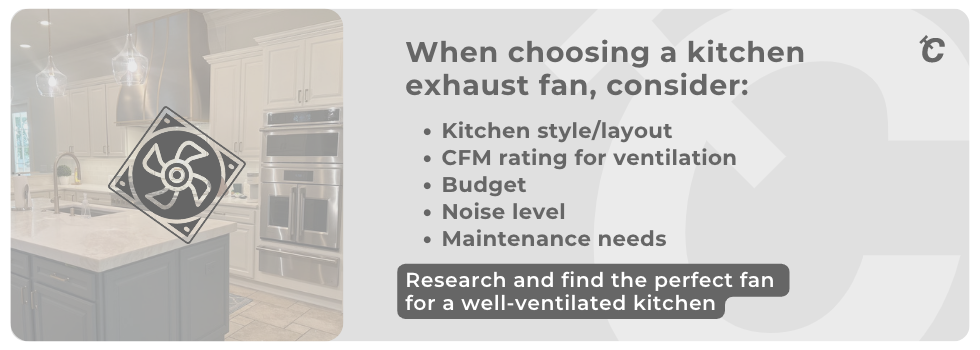
- Kitchen layout and style: Whether you have a traditional or modern kitchen, you can find a range hood that matches your style. Consider the layout of your kitchen and choose a hood that is appropriate for the designated cooking area.
- CFM rating: Your exhaust fan's cubic feet per minute (CFM) rating is critical to its performance. Choose a hood with a CFM rating suitable for your stovetop size, cooking style, and ceiling height, ensuring optimal ventilation.
- Budget: Kitchen exhaust fans come in a wide range of prices, so consider your budget and invest in a hood that offers value for your money while meeting your performance needs.
- Noise level: Some exhaust fans can create quite a racket and disturb your peace. Choose a hood with low sone ratings and quiet operation if a calm kitchen atmosphere is your priority.
- Maintenance requirements: Different types of hoods require different maintenance levels to remain clean and efficient. Choose a hood with accessible filters and easy-to-clean surfaces if you don't want to spend hours cleaning.
By considering these factors and doing your research, you can find a kitchen exhaust fan that perfectly suits your needs and preferences. Say goodbye to unpleasant cooking odors and hello to a well-ventilated, fresh-smelling kitchen!
What Are Range Hood Inserts?
Are you tired of bulky and unsightly kitchen exhaust fans cramping your kitchen's style? Say hello to range hood inserts, the perfect solution for a sleek and integrated look in your kitchen design!
Range hood inserts, also known as hood liners or built-in hoods, are installed into custom-made enclosures built into or around your cabinets, creating a seamless and integrated look in your kitchen. With different shapes and sizes, you can easily find a range hood insert that fits your needs and complements your existing decor.
Not only do range hood inserts look great, but they also offer excellent ventilation. Many models feature high CFM ratings and multi-speed fans to adjust to your cooking needs. Plus, since the hood is enclosed within the custom-built enclosure, it becomes virtually invisible, providing a clean and aesthetic kitchen design.
Another advantage of range hood inserts is their quiet operation. Since they are integrated within an insulated enclosure, they are typically quieter than wall-mounted or island hoods. Their low profile and sleek design make them ideal for modern kitchens that prioritize clean lines and minimalism.
While installing a range hood insert requires more effort than other types of exhaust fans, many manufacturers have simplified this process by providing detailed specifications and instructions for installation. The result is a customized and elegant solution that improves your kitchen's air quality.
In short, range hood inserts offer an elegant and customizable way to add ventilation to your kitchen. With excellent ventilation, quiet operation, and a clean look that blends perfectly with your cabinetry, a range hood insert could be the perfect option if you're looking for a seamless and elegant way to improve your kitchen air quality.
Do Kitchen Exhaust Fans Need to Be Vented Outside?
You might be tempted to skip this step, but let us tell you: yes, you need to vent your kitchen exhaust fan outside. It might seem more straightforward to let the air recirculate back into the kitchen but trust us; it's not worth it.
The whole point of an exhaust fan is to remove all the nasty stuff in the air, like smoke, grease, and fumes, and get them out of your kitchen. If you don't vent the fan outside, you push all those pollutants back into your home. Not ideal, right?
Venting your kitchen exhaust fan outside is crucial for several reasons. For one, it keeps dangerous materials like carbon monoxide and nitrogen dioxide from sticking around and potentially harming your health. Plus, venting outside also helps prevent moisture buildup that can lead to mold and mildew growth on your walls and cabinets.
If you're wondering how to vent your exhaust fan, it depends on your kitchen layout and your home's structure. Most people install ductwork that runs from the fan to the outside of the house through the roof or a side wall. Just ensure to configure the ductwork properly to avoid any kinks or turns that could restrict airflow and make the fan less efficient.
If installing ductwork isn't an option, you can always use a ductless exhaust fan. These models use a filter to purify the air before recirculating it into the kitchen. But be aware that ductless models are less effective than vented ones and require more frequent filter replacements.
It helps keep your air clean and healthy, prevents mold growth, and is generally the best option for optimal air quality. If you need help venting your exhaust fan or need help choosing a model, feel free to contact a professional. They can help ensure that your kitchen air is safe and pollutant-free.
How Strong Should a Kitchen Exhaust Fan Be?
When choosing a kitchen exhaust fan, you want to ensure it's strong enough to handle all the cooking fumes, smoke, and grease your kitchen produces. That's where the CFM rating comes in.
To make sure your kitchen is properly ventilated and has good air quality, it's recommended to choose a fan with a minimum CFM rating of 100 per linear foot of the range hood or stove or 1 CFM per 10 BTU of heat output.
But remember that other factors can affect the fan's required capacity, such as the size of your kitchen, the type of cooktop you have, and your home's architecture. Thus, the following are helpful ranges in determining the CFM needs based on the cooking styles:
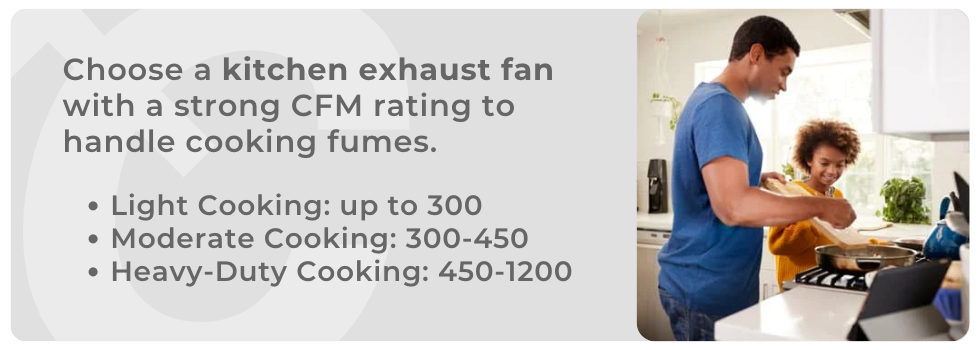
- Light Cooking: Up to 300 CFM
- Moderate Cooking: 300-450 CFM
- Heavy duty cooking: 450-1200 CFM
While you want a fan strong enough to do the job, you also want to avoid selecting one that's too powerful, as it can be costly, bulky, and noisy. Strike a balance by choosing a fan with a CFM rating that meets your cooking needs and kitchen specifications.
If you need help selecting the right kitchen exhaust fan, it's always best to seek professional advice to ensure optimal ventilation and air quality in your kitchen.
Do Smart Range Hoods Exist?
Have you ever heard of a smart range hood? The kind of range hood that can be controlled with your smartphone or even has automated features? They're still a rarity in the market, but some brands have started developing them. The technology is still in its early stages and has yet to become mainstream.
So, why are smart range hoods less widespread than expected? Range hoods are already simple appliances, so adding advanced features can quickly increase their cost and complexity. Plus, they only require a minor adjustment or fiddling once installed, making remote control and other automated features less practical in everyday use.
But keep hope! Some manufacturers have been experimenting with smart range hoods that can do more than turn on and off. For example, range hoods with built-in sensors can detect changes in air quality and adjust the fan speed accordingly. And, of course, some smart range hoods can be controlled via Wi-Fi connectivity, so you can turn them on and off or adjust the speed with your phone or even your voice.
That being said, some challenges remain to overcome before smart range hoods become commonplace. For one, adding more features could increase costs and make them less affordable. Some features may not even be useful in practice and just be seen as gimmicks.
We can expect more smart range hoods with practical features to emerge as technology advances. But for now, we might have to settle for the good old-fashioned range hood.
Clearing the Air: The Ultimate Guide to Kitchen Exhaust Fans
Your kitchen exhaust fan is the unsung hero of your kitchen, silently working to keep the air fresh and clean while you cook up a storm. When selecting your exhaust fan, consider factors like the CFM rating, cooking type, kitchen layout, budget, and maintenance required. Trust us, considering these will pay off in the long run!
With the right exhaust fan, your kitchen experience will be unique. You'll breathe easy knowing that air pollutants are a thing of the past, harmful gases are nowhere to be found, and mold and mildew don't stand a chance. So, cook to your heart's content, and let your exhaust fan do the heavy lifting.


